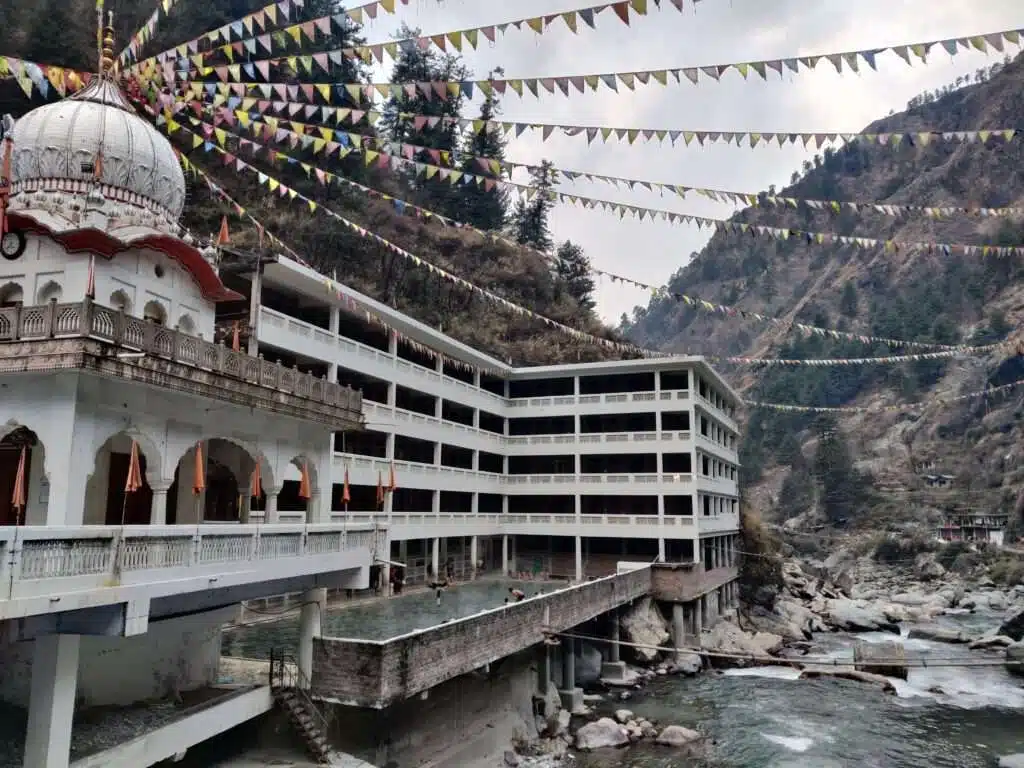Introduction: Nestled in the heart of the Himalayas, Manikaran Sahib is a place steeped in spirituality and history. This revered Sikh pilgrimage site, located in the Parvati Valley of Himachal Pradesh, holds not only religious significance but also a captivating history that has shaped its identity over the centuries.
Ancient Legends: The history of Manikaran Sahib dates back to ancient times, with legends and myths that add a mystical aura to the place. According to one popular legend, this sacred land was visited by Lord Shiva and Goddess Parvati. The story goes that in a fit of playfulness, Lord Shiva dropped a precious gem (Mani) into the waters of the Parvati River. The gem was later discovered by a serpent, and this event is believed to have sanctified the area.

Spiritual Significance: Manikaran Sahib is of great significance to the Sikh community. The first Guru of the Sikhs, Guru Nanak Dev Ji, is said to have visited this place during his travels. It is believed that Guru Nanak performed a miracle here, creating a hot spring by God’s grace to aid a group of hungry and cold disciples.
Gurdwara Manikaran Sahib: The centerpiece of this spiritual enclave is the Gurdwara Manikaran Sahib. Constructed in the 20th century, the gurdwara stands as a testament to the Sikh architecture and serves as a place of worship, community service, and spiritual reflection. Pilgrims from far and wide visit to pay their respects and partake in the langar, a community kitchen serving free meals.
The Healing Hot Springs: One of the most unique features of Manikaran Sahib is its natural hot springs. The geothermal springs, believed to have healing properties, attract visitors seeking spiritual rejuvenation and relief from various ailments. The hot water is also used for cooking rice in the langar, a practice symbolizing the blessings of Guru Nanak.
Cultural Harmony: Manikaran Sahib is a testament to the harmonious coexistence of different cultures and faiths. Apart from the Sikh Gurdwara, the area also houses Hindu temples dedicated to Lord Ramchandra and Lord Shiva. This cultural amalgamation adds a rich tapestry of diversity to the site.
Festivals and Celebrations: The gurdwara comes alive during festivals, especially during the birth anniversary of Guru Nanak Dev Ji. Pilgrims and devotees gather to participate in prayers, processions, and festivities, creating an atmosphere of joy and devotion.
Visitor Experience: For visitors, Manikaran Sahib offers a tranquil escape from the hustle and bustle of everyday life. Surrounded by snow-capped peaks and lush greenery, the site provides a picturesque backdrop for spiritual contemplation and introspection.
Conclusion: The history of Manikaran Sahib is a tale woven with threads of spirituality, legends, and cultural diversity. As the sacred land continues to draw pilgrims and seekers from all walks of life, it stands as a timeless symbol of the unity of humanity in its spiritual quest. Whether you seek healing waters, divine blessings, or a retreat into serenity, Manikaran Sahib welcomes all with open arms and a history that echoes through the ages.
Checkout Similar Blogs
Kasol: Beyond the Buzz of the “Amsterdam of India”

